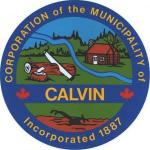 The cost of technology – from computer hardware, to customized and licensed software, to information technology staff – is making up an increasingly large portion of every municipality’s costs. Is there a way to do things more cheaply?
The cost of technology – from computer hardware, to customized and licensed software, to information technology staff – is making up an increasingly large portion of every municipality’s costs. Is there a way to do things more cheaply?
In a recent guest column for the Canadian Taxpayers Federation, (www.taxpayer.com/main/content.php?content_id=40) consultant Bruce Hollands suggests Canadian municipalities could collectively save $100 to $150 million per year on IT costs.
He says municipalities should consider adopting the approach taken by Washington DC, which has its employees using the free word processing, spreadsheet and e-mail programs provided through Google.
A special report on technology and government in The Economist last February (https://www.economist.com/specialreports/displaystory.cfm?story_id=10638083) explains how the city did away with its servers and reduced its software costs from $50 a month per employee to $50 a year. Its police officers are also now trying out iPhones, complete with free maps and satellite pictures from Google, to replace traditional police radios.
Hollands argues that municipalities need to look for “off-the-shelf savings” rather than turning to costly and customized IT solutions. He also advocates the creation of an independent certification body in each province to determine which products and services meet municipal sector requirements.
“This will encourage the development of standardized products and services and drive down the price of municipal goods and services,” he writes.
Kevin Peacock, works in corporate information services with the city of Saskatoon, and is the past president of the Municipal Information Systems Association (MISA) Canada.
While he believes IT savings can be found for municipalities through cooperation and standardization, Peacock is doubtful that free software can work well in most municipal contexts.
“I think sometimes people are really naïve about what they get with free stuff,” he says. “You get what you pay for in this world.”
Peacock notes that free programs often have compatibility issues with common licensed software, and come without technical support. Rather than Googling our way to savings, he points to a new vendor partnership program started by MISA (www.misa-asim.ca) that is working to create common software pricing for municipalities across the country.
Potentially a boon to small municipalities, the arrangement would offer the same price per user to any municipality, regardless of the number of licenses it purchases.
Given that municipalities aren’t typically in competition with one another, Peacock also sees room for the development of standardized platforms for some basic services. He adds that IT staff at municipalities across the country already share much in the way of information, as well as customized software programs developed in-house.
“We have a very active community,” notes Peacock, who says many IT staff talk via e-mail frequently and attend yearly MISA conferences in search of cooperative solutions to municipal issues.
Finally, with a suggestion sure to be contentious in some smaller municipalities, Peacock wonders whether it might make sense to have some consolidation of IT resources.
In Saskatchewan, for example, he questions whether it would be logical for Regina and Saskatoon to split up the province and take over providing some standard tasks, such as assessments, for the smaller municipalities.
Not only might that be more cost-effective, he suggests it could deal with the difficulty some smaller municipalities have in recruiting and retaining qualified IT staff.
“Maybe in 10 or 15 years time, it might become real. Who knows?” Peacock says, while admitting that change often comes slowly in government sectors.










